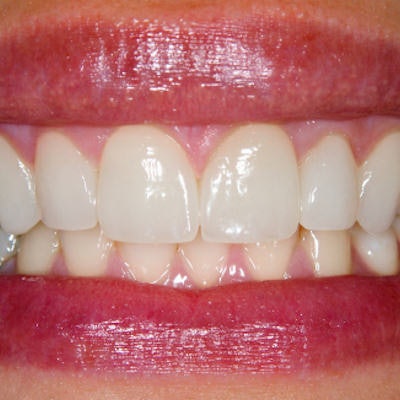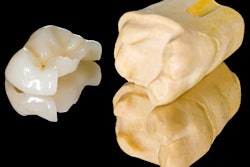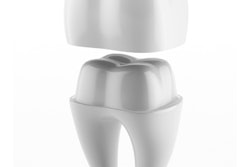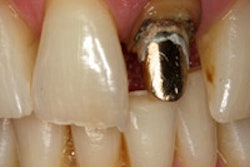
Resin cements can change the translucency, color, and shade of high-translucent ceramics, according to a new study in the Journal of Applied Oral Science.
Dentists usually pick a ceramic shade based solely on the shade of adjacent teeth. However, the final color of the restoration depends on a combination of the underlying tooth structure and resin cement layer, according to researchers from Brazil. The team found that a darker underlying resin cement layer led to more noticeable changes in ceramic translucency, chroma, and shade of the translucent ceramic veneers.
"Besides hue, value, and chroma, the total transmittance of ceramic restorations is a key factor for the final aesthetic outcome and needs to be carefully considered during material selection," wrote lead study author Daiana Kelly Lopes Hernandes, DDS, and colleagues (J Appl Oral Sci, July-August 2016, Vol. 24:4, pp. 391-396).
Ceramic type, underlying resin critical
Dentists pay careful attention when choosing ceramic materials, because the outcome will depend on the porcelain it contains, the authors noted. Different brands vary in thickness, color, translucency, opalescence, fluorescence, surface texture, and shape.
“Since high-translucent ceramics are more translucent than low-translucent ceramics, the use of resin cements may change their final ceramic translucency, chroma, and shade.”
The significant influence of the resin cement layer on the final aesthetic result has led to the development of resin luting agents with different shades, which allow clinicians to select the proper cement shade for laminate veneers to improve the final color match. The researchers wanted to find out if different shades of resin cement (A1 and A3) had an influence on the color difference, translucency, and chroma of lithium disilicate ceramic veneers with high (HT) or low translucency (LT).
In their analysis, the researchers found statistically significant differences in color change, translucency, and chroma for ceramic translucency and cement shade. The color change from high-translucent ceramics was significantly higher than low-translucent ceramics, regardless of resin cement shade, they noted.
The color change was more significant when A3 resin cement was placed under the ceramic than when A1 resin cement was used, regardless of the ceramic's translucency, the researchers reported.
| Mean color difference in low- and high-translucent ceramics after cement insertion | |||
| Cement shade | LT (p-value) | HT (p-value) | Average of each cement (p-value) |
| A1 | 1.46 (0.35) | 1.93 (0.31) | 1.69 (0.40)a |
| A3 | 2.55 (0.37) | 3.04 (0.27) | 2.79 (0.40)b |
| Average of each ceramic | 2.00 (0.67)A | 2.49 (0.65)B | |
Regardless of the presence of cement, HT ceramics always exhibited higher translucency than LT ceramics and were also the closest translucency to human enamel, according to the authors.
The thickness of the underlying resin luting plays an important role, they pointed out. The thickness of ceramic laminate veneers range from 0.5 mm to 1.0 mm; therefore, minimally invasive preparation is needed. However, prior studies found that ceramic thickness should be at least 2.0 mm to avoid any substrate influence on the restoration's final shade.
Translucency and resin shade
The lithium disilicate glass ceramics evaluated in this study are more translucent than other ceramic types such as polycrystalline and glass-infiltrated composites, according to the authors. Therefore, the effects of the underlying resin cement on restoration shade will be less pronounced in other ceramics, they noted.
"Since high-translucent ceramics are more translucent than low-translucent ceramics, the use of resin cements may change their final ceramic translucency, chroma, and shade," the study authors concluded. "Therefore, it is important for clinicians to be able to predict the translucency of ceramic laminates when the [resin cement] is placed under them, instead of relying solely on the original translucency of such products."



















